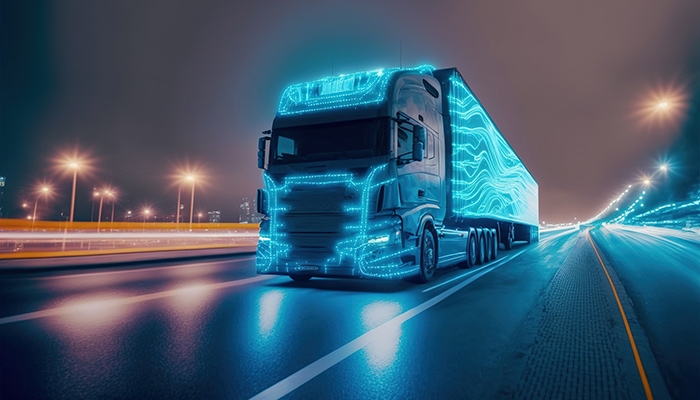How Artificial Intelligence Is Improving Supply Chain Operations

AI may better describe augmented intelligence rather than artificial intelligence. While AI systems can help alleviate labor shortages, they often perform best while working alongside people and augmenting human intelligence.
The release of ChatGPT in November 2022 debuted artificial intelligence (AI) to the general public. Within five days, more than one million people had written sonnets, songs, and synopses using ChatGPT.
By June the number of ChatGPT users exceeded 100 million. Alert to its promise and perils, the United States has threatened to regulate AI while China has promised global AI leadership by 2030 and Putin has said that whoever wins AI will rule the world.
AI promises to enhance supply chain flexibility, resiliency, and efficiency. Google has reduced energy costs at its data centers by 40% with DeepMind AI technology. Mahindra has used Blue Yonder to improve forecasting by 10%, which it claims increased service levels by 10% and reduced inventories by 20%.
The logistics industry has attracted $80 billion of venture funding since 2015 to digitize and automate supply chains with robotics, visibility, and optimization, and long-haul and last-mile delivery marketplaces. Many promising companies are emerging, including 25 currently valued at more than $1 billion according to Q, NGP Capital’s proprietary database.
Despite AI momentum and funding, supply chain automation has been slower than many have hoped. Industry fragmentation makes supply chains an ideal candidate for AI optimization but also complicates adoption.
A 2021 survey by Boston Consulting Group observed that AI was widely used for demand forecasting but was not yet adopted for higher potential areas for automation.
Many logistics tech startups remain in proof-of-concept purgatory with several notable exceptions. Amazon acquired Kiva Systems in 2012 and had deployed more than 520,000 mobile robots 10 years later. DHL has increased pick rates by 30-180% using 3,000 mobile robots from Locus Robotics.
Early adopters of AI-enabled supply chain automation have reduced logistics costs by 15%, inventory levels by 35%, and increased service levels by 65% according to McKinsey. The solutions with the most traction are easy to implement and have clear, fast payback periods.
Gartner expects the level of machine automation in supply chains to double in the next five years. Following are a few areas where AI-driven automation can improve supply chain performance.
- Supply Chain Optimization: COVID unmasked the risks of rigid supply chains balkanized by industry fragmentation and siloed data resulting in supply chain disruption costs of up to $4 trillion. Startups such as Stord, Flexe, and Spacefill are creating flexible supply chain networks with adjustable routing optimization based on changing conditions.
- Price Optimization: Pricing is the highest leverage opportunity in logistics: a 1% price improvement increases profitability by 30% or more. AI-driven pricing software can optimize quotes based on real-time monitoring of prices, inventory levels, and other factors across the network.
- Warehouse Automation: AI-driven robots can streamline picking, packing, and sorting processes. More than 200 warehouse robotics companies demoed at Modex in 2022, including Autostore, Berkshire Grey, Boston Dynamics, Exotec, GreyOrange, and 6River.
- Autonomous Trucking: Logistics promises to be an early adopter of autonomous driving technology as full autonomy could reduce operating costs by 45%, resulting in $85 billion to $125 billion of savings in the United States. It can also save lives – truck drivers are ten times more likely to die early than the average American. Autonomous trucking companies include TuSimple, Waymo Via, Embark Technology, and Rivian
- Real-time Visibility: Startups like Project44, FourKites, and Shippeo offer customers real-time visibility of shipment status and supply chain infrastructure. Maersk’s AI-powered virtual assistant, Captain Peter, tracks delivery status from source to destination and suggests optimal shipping routes for their customers.
- Inventory Management: AI can optimize inventory levels, order management, and reverse logistics by continuously monitoring demand patterns to reduce overstocking, understocking, and reduce holding costs. Providers include Netsuite, Finale Inventory, Brightpearl, and Zoho.
- Customer Service Automation: UPS Bot, an AI-based chatbot, automates back-office tasks such as shipment tracking, customer inquiries, and rate quotes. Studies indicate that back-office automation can save up to 40% on service costs.
- Predictive Maintenance: Studies indicated that AI-driven predictive maintenance systems can predict breakdowns with 85% accuracy saving 10% of maintenance costs. Logistics predictive maintenance startups include Quivr and Awake Mobility.
AI may better describe augmented intelligence rather than artificial intelligence. While AI systems can help alleviate labor shortages, they often perform best while working alongside people and augmenting human intelligence.
AI systems can be a driving force in transforming the supply chain landscape over the next five years and beyond. Early adoption enables users to develop know-how to apply and improve AI models and ultimately lead industry change.
